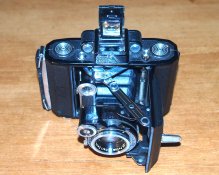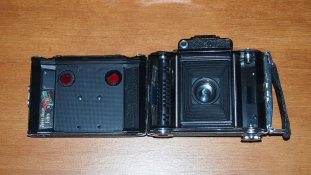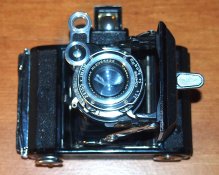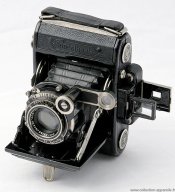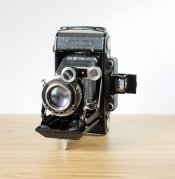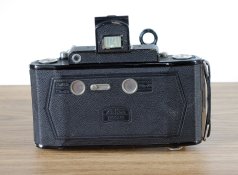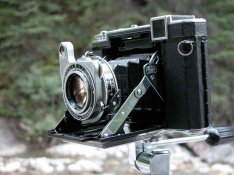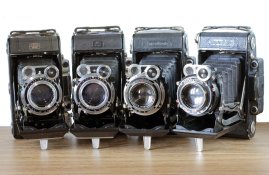ContaxRTSFundus
Member
I've raised this question in the Folders Group but thought I'd go a little wider in the hope that one of you guys may know the answer...
My gf has given me a Zeiss Super Ikonta 530 - that's what's embossed on the leathers - but it's an odd-ball and no one seems able to identify it. It is probably an export model as it has embossed on it: Made in Germany/Industria Alemana
What is VERY odd is that this 530 has a shutter button on the top plate; I've never seen one with this and I understood that body shutter releases only appeared from 1937 and so wouldn't be on a 530. Furthermore, it has a 7cm 3.5 Tessar instead of the more usual 7.5cm lens; it has a Compur shutter with a top speed of 1:300 as well as B, T. It has an Albada Finder and a sliding cover for the red windows on the back plate. Inside the back plate is the legend Zeiss Ikon Film 6x9cm and a delightful colour label showing a box of Zeiss Ikon film. The camera shoots 6x4.5. It is in a black finish.
I've contacted cameraquest and classiccameras both of whom have been unable to identify this 530 variant and referred me to zeisshistorica.org, who have completely ignored my emails. Can anyone here help?
Thanks for your time.
My gf has given me a Zeiss Super Ikonta 530 - that's what's embossed on the leathers - but it's an odd-ball and no one seems able to identify it. It is probably an export model as it has embossed on it: Made in Germany/Industria Alemana
What is VERY odd is that this 530 has a shutter button on the top plate; I've never seen one with this and I understood that body shutter releases only appeared from 1937 and so wouldn't be on a 530. Furthermore, it has a 7cm 3.5 Tessar instead of the more usual 7.5cm lens; it has a Compur shutter with a top speed of 1:300 as well as B, T. It has an Albada Finder and a sliding cover for the red windows on the back plate. Inside the back plate is the legend Zeiss Ikon Film 6x9cm and a delightful colour label showing a box of Zeiss Ikon film. The camera shoots 6x4.5. It is in a black finish.
I've contacted cameraquest and classiccameras both of whom have been unable to identify this 530 variant and referred me to zeisshistorica.org, who have completely ignored my emails. Can anyone here help?
Thanks for your time.








